What Is Sales Cadence & How to Use It for Closing More Deals: Your Ultimate Guide
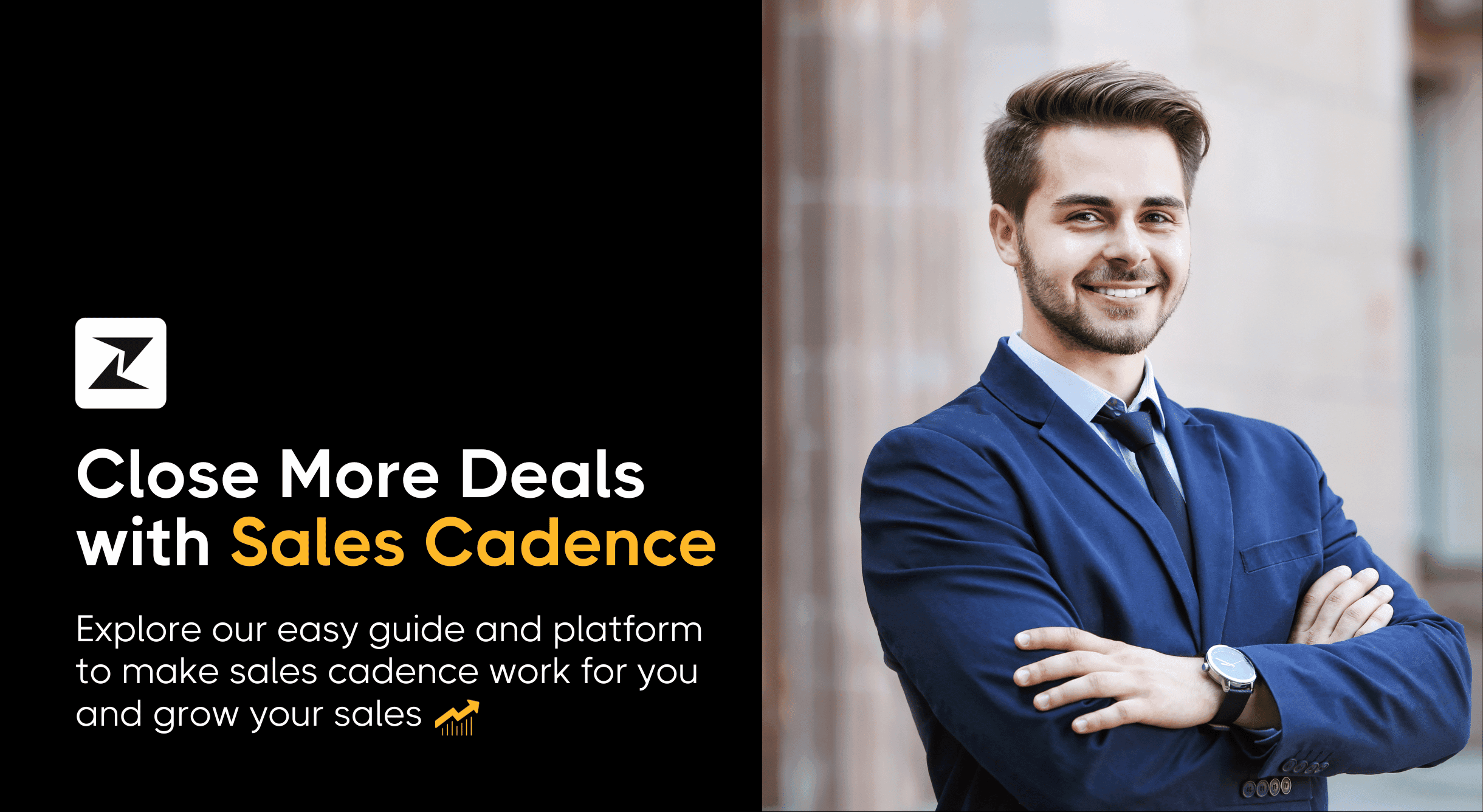
You enter a shop and start searching for things to buy. Eventually, mostly under 5 minutes, you see a salesperson coming up to you and asking you about what you are looking for. You tell them, and then they accompany you to find the right product.
This does not end here. The salesperson further asks you about your purpose for the product, then asks what specifications you are looking for, helps you find the right product for you, and finally suggests you to buy the one that’s best fit for you. If you buy the product, then voila! But if you are reluctant, then they give you options, accompany you throughout and tell you why you should buy a particular product. They might even tell you about an ongoing offer or might provide a discount. Mostly, after all the efforts, you, as a customer, end up buying the product. You get the product billed, and they thank you for shopping with them and further ask you to visit again to buy a product that you might need.
If you notice, for the time you were shopping, you had a salesperson next to you constantly talking to you, understanding your needs, and finally convincing you to buy the product. So if we see step by step- You were a prospect to them. The salesperson then observed you looking for a product to understand your concerns- so this was their research to understand you better. Then they eventually reached out to you to ask what you are looking for. This was the first touchpoint of the sales engagement.
After observing you, they did dig deeper, engaged in a conversation with you, understood your objective with the product, and helped you find the best one- this was the second touch point of sales engagement.
When they saw that you were apprehensive about buying the product, they offered you a discount and got you interested again- this was the third touch point.
Finally, you bought the product, but they again reminded you to come back and buy a related product that you might need. So even while leaving, they engaged you by reminding you to come back, and you might or might not visit the store again, but they got you thinking about it while also selling the main product.
When all this is done remotely and in an online setting where most of B2B sales happen today, it is called a sales cadence!
Now, let’s understand in more detail about what sales cadence is.
What is sales cadence?
Sales cadence is a fixed sequence of touch points that a sales team uses for outreach and sales engagement to ensure that they connect and engage well with their prospect in order to make a sale. Sales cadence is designed in a way that it becomes very unlikely for a customer to not buy a product, and they mostly tend to close the deal with cadence influence. The practice is done for a fixed number of days, on specific time periods, and with an extremely precise sequence. Well, that is the beauty of a carefully curated sales cadence; if it is designed as per your business and sales pipeline needs, it will give you record-breaking deals and revenue!
Why is a sales cadence so important?
Sales cadence has become one of the most vital tools to close more deals. So more conversions is the ultimate objective of sales cadence. However, sales cadence does a lot more than just closing deals for both your business as well as your sales team. Let me list a few undeniable reasons below that will make you get the importance of sales cadence right away!
Sales cadence helps you pin your focus on actual selling
Without a steering wheel, you can only drive so far that too to eventually run into a crash. That is exactly the situation of your sales team without a sales cadence. You need a plan to steer your sales team and their efforts in the right direction. Sales ain't easy, but with the right strategy, your team's efforts will be utilized in the right direction.
Using sales cadence, you can always strategize your entire sales outreach and engagement flow well in advance and tweak it based on your learnings when you put it into action. Having entire flow organized like that with cadence, you and your team can stay focused on doing actual selling rather than worrying about that next follow-up.
Prospecting gets leads, but follow-ups get conversions. Sales cadence helps you do both!
It might come as a shocker, but only 2% of sales happen in the first point of contact. That means that most sales reps lose 98% of revenue because of missed follow-ups and lack of growth-oriented sales process automation.
Let's think this through practice; everyone needs time to make a buying decision. So you need to put in the effort and tell your prospects why they need your product. You have to convince them why they should invest in your products and services. And to do that, one touchpoint is not definitely not enough. That’s where the role of sales cadence comes into play! Sales cadence is based on the essence of multiple follow-ups. Thus, they are a necessity.
With sales cadence, you get to automate multi-channel engagement and follow-ups with all your prospects in a personalized way. This ensures that you don’t lose a deal just because you didn’t follow-up enough. Sounds cool, right?
Sales cadence gives space to your prospects
Not everyone likes to have a call but not everyone likes to chat with brands on social media either. So, as a salesperson, you need to understand the boundaries and hesitations of your prospects, and sales cadence helps you do that by diversifying your contact channels.
Sales cadence builds a systematic way for you to reach out to your customers on multiple occasions, multiple times, and through multiple channels.
Following up on the prospects on one platform again and again can bother your prospects, while reaching out to them on multiple platforms is a little less invasive. So, with multi-channel outreach and engagement using sales cadence, you can give space to your prospects, which increases your chances of having a conversion and winning the deal.
Sales cadence does give results
As per the statistics, 95% of conversions take place because of 6 or more follow-ups. The whole point of a sales cadence is to follow up on your prospects multiple times and finally close the deal with them. Sales cadence is built to give results. Not only that, but a sales cadence also helps in generating more revenue in less time because your sales reps are aware of their next move, and the guessing game does not have any space in the process.
Strategically defined follow-up steps in cadence, combined with sales cadence software and automation, are bound to give desired results.
How to build a winning sales cadence: step-by-step
Everyone is using a sales cadence these days, and everyone is doing all the same things. So how can you escape the rat race?
Well, you need to build a custom sales cadence that is specific to your business, your product, and your prospects. To do that, you can take help of any robust sales cadence tool such as Zixflow. And to top it all, you will add sales workflow automation to your cadence. You can automate your cadence up to about 90%; let's save 10% for the effort of deep personalization and preparing how to close the deal.
Find and segment your target audience
Not everyone is a prospect, and not everyone can be. A shopkeeper with a local shop and a team of four may not need a sales operating system, but a startup with a team of 4 salespeople might. You need to be careful while cursing your sales cadence because, at times, target audiences overlap as well. In that situation, you will have to cater to different audiences accordingly.
A common mistake to avoid is using the same sales cadence for every product and audience. Consider this; social media would be an essential part of your sales cadence if your target audience is millennials or Gen Z; however, your efforts on social media might not have the same effect on boomers.
So before designing your cadence, make it clear who you want to design it for. Consider the different segments and what they have to offer. When your cadence is specifically designed, you will also know which segment the sales team has to invest the most time in and where the least.
Research. Research. Research. Know your prospect well.
“Whoever understands the customer best, wins.” - Mike Gospe
You need to know your target audience inside out. The first thing you need to find out is their pain points. For that, you need to frame your sales qualifying questions accordingly. However, knowing just customer concerns is not enough either. You need to dig deeper and find out your target audience's behavior towards certain products that exist in your niche market.
For instance, the fitness industry is obsessed with finding out every detail about every single product that their audience is using. This is the reason why fitness brands can’t afford to lie in their advertisements, even by omission. They know how serious their target audience is, and they can get sued.
This was an example from the B2C industry; when it comes to the B2B industry, you need to be even more careful. Even if your product is too good to be true but you do not understand your customers' behavior or their pain points, you won't be able to sell, no matter how many times you follow up.
For instance, if you are selling a chatbot for lead generation and live chat tool, but you do not know if your target audience understands the importance of sales engagement or not. Or if you do not know that your audience will counter question you that why they should choose your product over the competitors. Or if you are not respecting the time of your target audience, who are working professionals, and you call them to sell your Leadbot during their lunchtime— Then, my friend, the results will not be favorable.
Understand your audience, stalk them if you have to, but get to know about them as much as possible because your sales cadence's success depends upon how well you understand your audience.
Find out the best communication channel
Over 23 billion texts are sent every day. Over 347.3 billion emails are sent every day, out of which 122.3 billion are reportedly spam emails. And 13.5 billion calls are made every day across the world. These statistics are overwhelming and make one wonder if my email will be read or if my SMS will be opened. To make sure you reach your target audience, you first need to be sure of where your target audience is most active. Because if you do not, then your follow-up attempt will become one among many and might even be futile.
What if you are following up on SMS back to back, but your target audience is most comfortable on call?
That is why research and getting your communication timing is right are one of the first three steps of curating a sales cadence. Until you know about your prospects, you won't be able to get it right.
Set goals for every touchpoint
With some prospects, you might have to follow the entire sales cadence to convert, while with some, you might close within just two contacts. So you need to set specific goals for every touchpoint. Even though your goal with every touchpoint should be to close deals with the prospect, at times, you need to get flexible as per customer behavior and might have to put more effort into nurturing first before focusing on closing.
The schedule is the most important
If you are being served breakfast at 2:00 PM, it is too late and unflattering, but if you are being served breakfast at 6:00 AM in the morning, it is too early and overwhelming. Neither of the scenarios is good enough. The same is the case with your prospects as well. If you chase too much at the beginning itself, it will put them off. But if you do not show enough interest at the right time, then someone else will, and your prospect will be gone. You need to have balance.
Do hits and trials and find out what schedule is giving you results, and in the end, try to stick to it. Sales cadence is about having a full-fledged, step-by-step sales process to boost your growth and to close more customers and not leave anything for guessing. So make sure you plan everything from the space between your touchpoints to the time of your touchpoint. Before you set the schedule, think of yourself as the customer, and you will realize that no prospect wants to hear from a salesperson every day. So hovering over their heads is a big no-no.
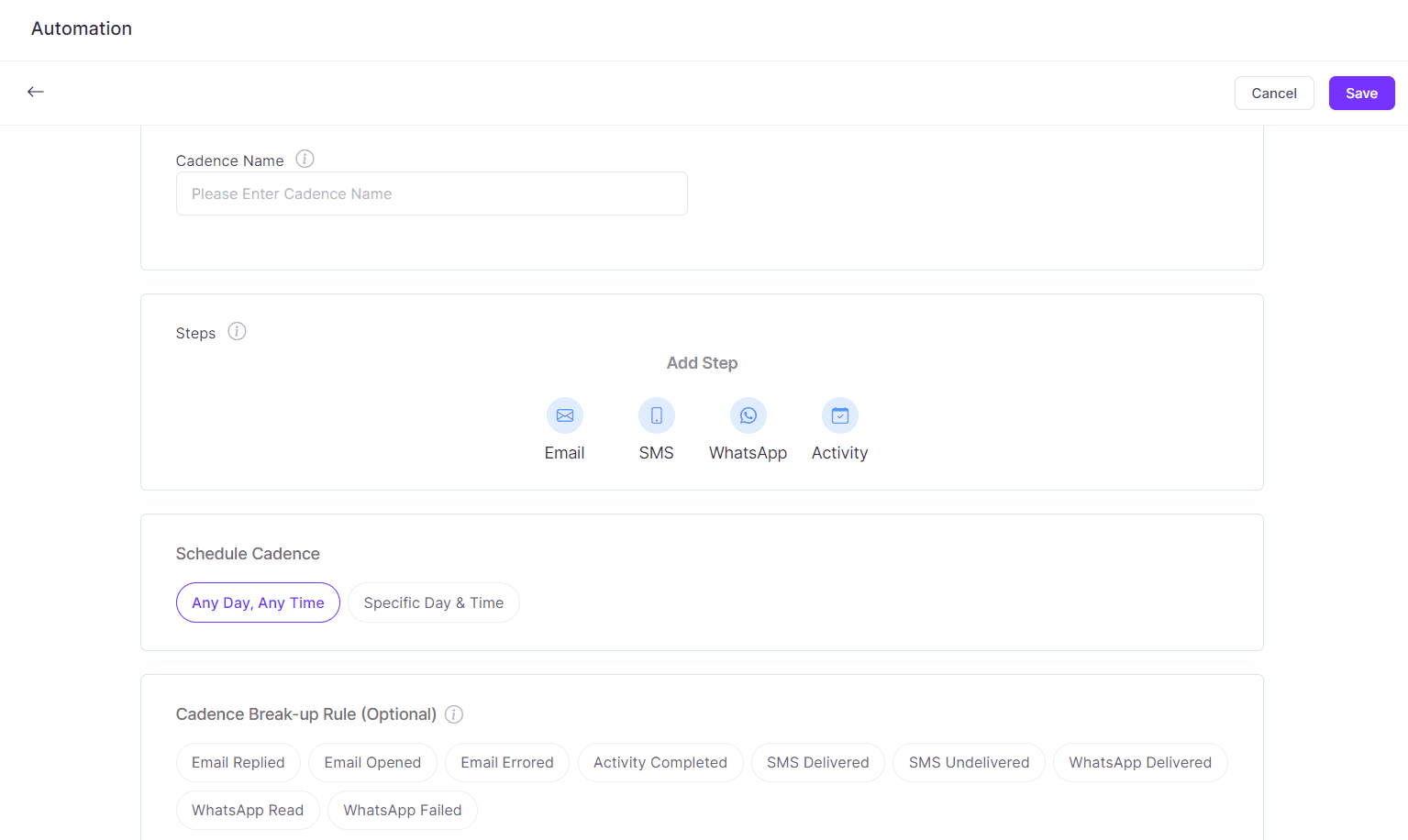
Sales cadence best practices to close more deals
There is no guarantee of things in the sales industry. Not everything will work for everyone. However, here are a few tried and tested sales cadence best practices that tend to give results to everyone, assuming that they have followed the aforementioned steps to build a sales cadence.
Stick to your ideal customer profile
We know it is appealing to send your proposal to everyone and to sell your product to everyone. But it is not practical. As mentioned, define your audience. Find out your ideal customers. Quantify your data and segment them according to age, demographics, geography, and other factors.
Since you will spend plenty of time curating the list for your ideal customers, make it a point to stick to it!
Finalize where to connect
Where is your target audience sitting? For instance, if they are working professionals, then during work hours, the chance of an email getting opened is more than an SMS getting opened. To finalize your communication channel, you will again have to refer to your ideal customer profile and understand where to contact and how to contact them based on the industry type and channel preference.
For instance, if you are a SaaS brand, then you will have to surf through and reach out to your customers online through mail, SMS, and social media. In most cases, that is enough. But if you are into the car dealership business, then you will have to follow up on calls, text messages, maybe WhatsApp, and might even have to meet in person to give a product demo.
Every prospect will come with their own demands, so find common ground among your prospects, group them, and finalize your communication channel. However, finalizing a channel doesn't mean you will smother your prospects there.
I suggest you mix and match your communication channels.
As a customer myself, I can tell that I wouldn't like to open my inbox just to see a text message from a salesperson or a brand every 3 days.
“Every contact we have with a customer influences whether or not they’ll come back. We have to be great every time or we’ll lose them.” – Kevin Stirtz
Also, when you reach out to your customers through different channels, eventually, with time, you are able to engrave your brand into their subconscious. They might not buy your product right away, but at some point, if they intend to buy, then your brand would be the first one to pop up in their head. It is a sales psychology technique that is being used by several big brands like Apple, Amazon, and Microsoft.
How many times to contact?
Is there a fixed number of touchpoints to have throughout your sales cadence? NO!
No one can ever tell you how many contact points you need to finally convert a customer. But does that mean you should keep trying? Again no! The movie Wolf of Wall Street has incredible sales lessons, but one that we will not work on in today's scenario is "do not take no for an answer."
Things are so fast-paced, and technology is so advanced that while you are busy not taking no for an answer, someone else will snatch all your other prospects while you will be focused on just one.
Today, you need to take no for an answer, and you need to know when to stop. There are 3 different types of Nos that you must often witness as a salesperson.
"No, I do not need your product."
[The firm No- there is no changing when someone expresses their disinterest so strongly.]
"No, I don't need it right now, but I would like to know more."
[The slightly feeble No- the customer might not need the product, but they are interested to know more. Thus, they are worth putting in their time and effort.
"No, I do not need it right now, but maybe later."
[The customer is interested, but due to certain constraints, they are unable to get your product right away.
Give them space and then follow up on them after some time.]
With every single 'No,' you know best what to do. So while curating your sales cadence, no matter how many steps you keep, what you actually need is to keep a condition at every step that will save you and your sales team from getting into a chase with the wrong person.
The experts say between 8-12 is a good number of steps to have in your sales cadence. But the statistics say that a high-performing and constantly growing sales team has an average of 16 touchpoints per prospect within 2 to 4 weeks.
As I said, no one can give you a fixed number; you need to find out the best system for yourself while making sure that you do not invest your time in the wrong people.
What is in it for the customer? AKA define and filter value proposition
No one has the time to sit and listen to what a salesperson has to say. Every customer is waiting for the real deal- What is in it for me? Fair enough, you cannot push someone to buy anything unless it is really making a difference in their life.
Cut to the chase, do not waste your prospects' time. Tell them what is in it for them because if you do not catch their attention, they will lose any interest they ever had in your products and services. With every follow-up and every touch point of the sales cadence, you need to add value to your customers. You need to offer something to them to keep them interested and also to drive your sales engagement. So how do you do that?- Through value propositions.
Value proposition
Essentially a value proposition has five elements that every customer is concerned about.
Relevancy
You need to think this through from the customers' perspective. What problems do your customers have? Do these problems need to be resolved urgently?
Benefit
This element is solely based on what is there for the customer in the whole deal. Will your product be beneficial to the customer? Will your product resolve the problems that need to be addressed urgently? Why should they care about your product?
Competitive differentiation
Keep an answer ready for all the following questions because your prospect is going to object to them. How is your product different from the competitors'? Why should the prospect opt for your product over your competitors? What is the uniqueness of your product that makes it better than your competitors?
Risk factor
Wherever there is a point of money, there is risk. You need to make sure that what you are offering is as risk-free as possible for your customers.
Proof and quantification
Throughout the sales cadence activities, build trust with your prospects and give them a reason to believe you. Talk to your prospects in their language and quantify the benefits of your product as they want to hear them.
A value proposition map is very perplexing. Figure out all the above elements for yourself, and refine them unless you are just left with the unembellished answers to what is in there for the customers and why they should choose only your products and services.
Prospects like it easy. They want clear-cut answers, so stop straddling the fence, listen to your customers, and make them listen to the things that matter.
Level up your content, add some spice
At every touchpoint of the sales cadence, you need to give valuable content to your prospects to keep them interested. It is not easy, but it is not impossible either; if you want to make a mark, then you need to put in effort as well.
Add visual elements
It is always the brands with diverse content types that are driving the sales engagement and, eventually, their conversions through their campaign efforts. Bland emails or texts are taking you nowhere. We are in a world full of visuals where we can frame an entire sentence just with emoticons. So plain words will do you no good unless you add an element that enhances their importance. Photos, videos, gifs, and emojis do just that.
Consider the email below. There is no image, no video, and forget any elements in the content, but even the person who is sending the mail has not updated their profile picture. No doubt this email was lying unread in my inbox. This is a classic example of what not to do.
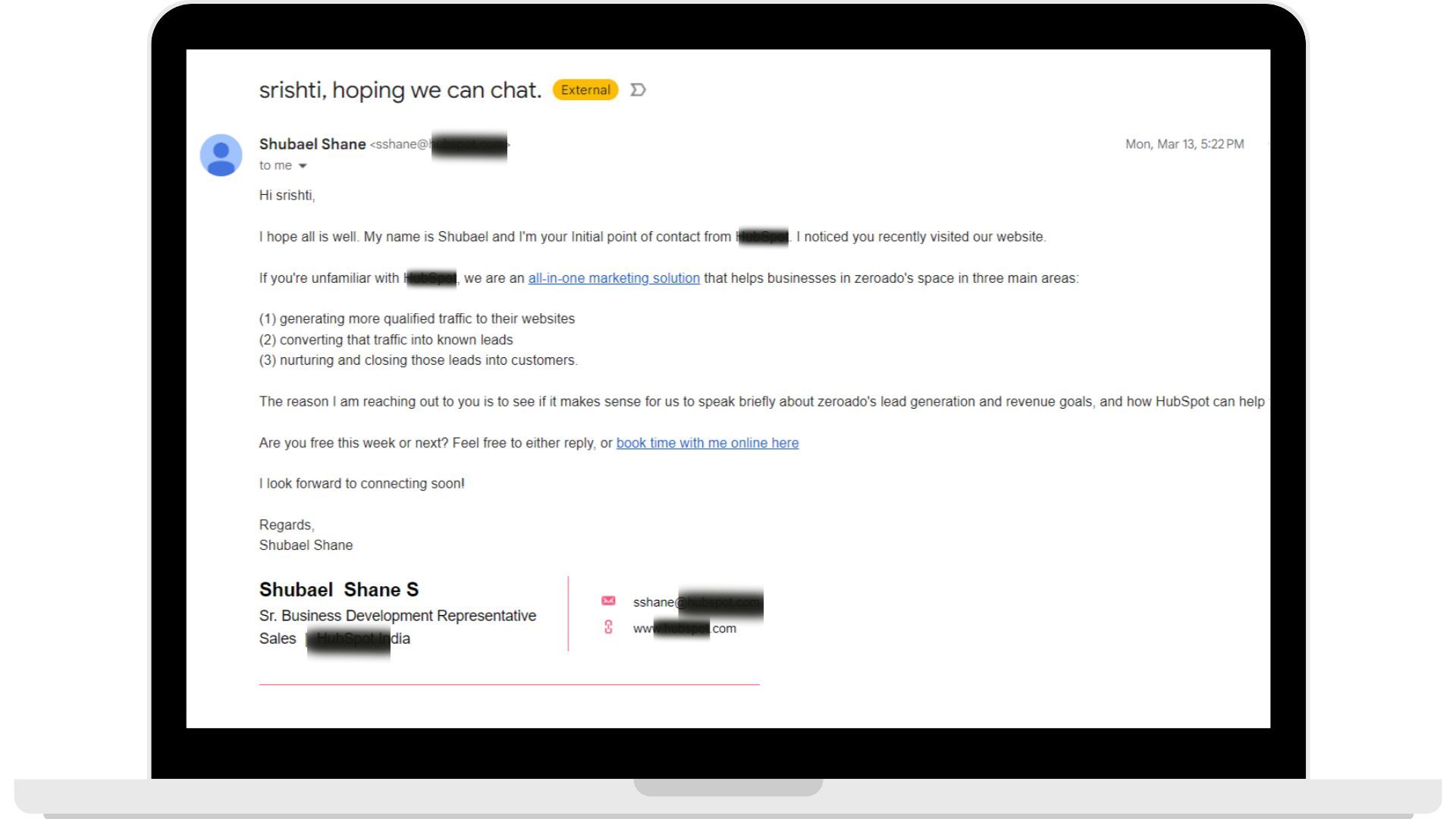
Here is an example of what to do. Add images and other elements to make your content more engaging.
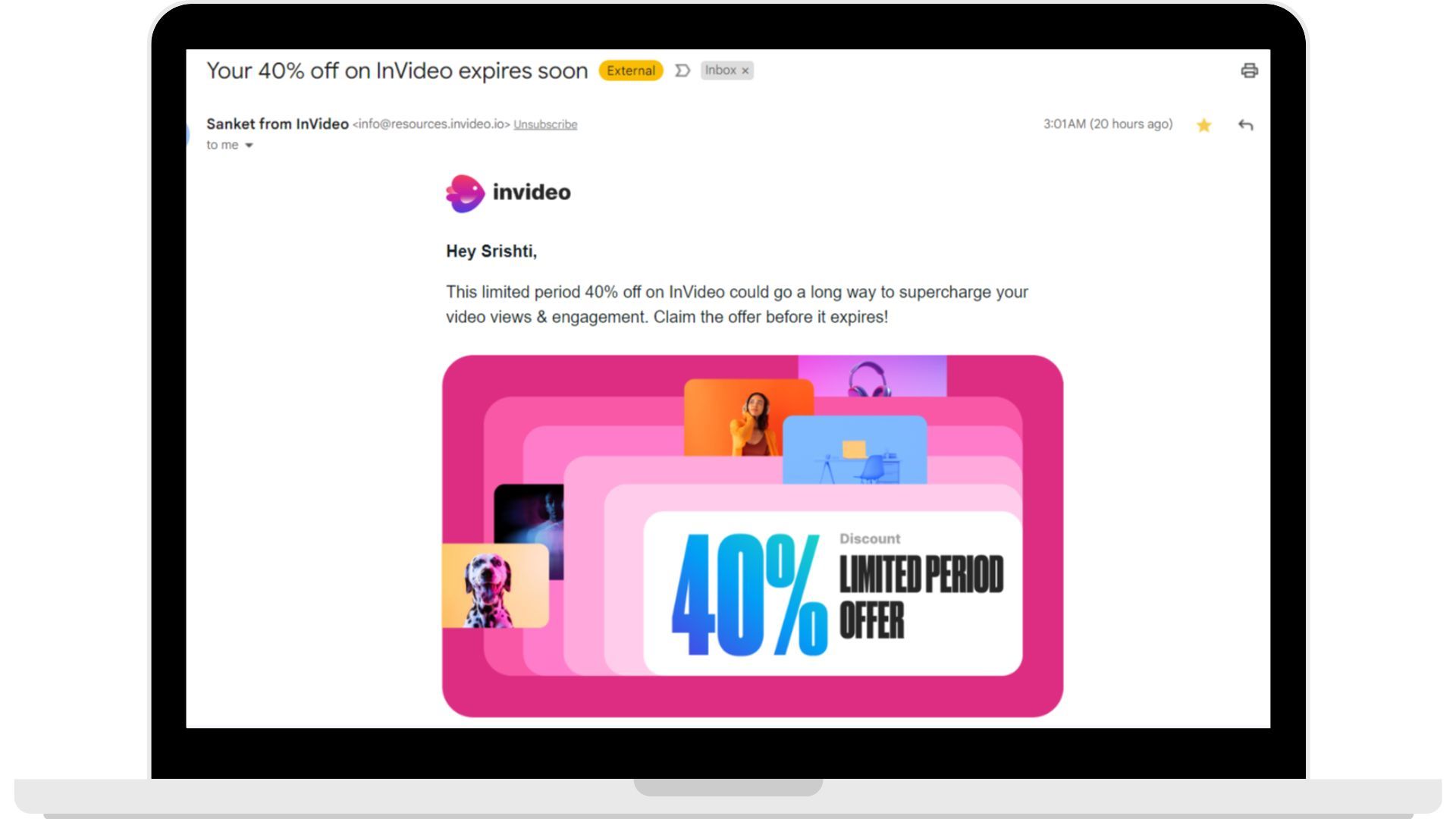
Add value to the prospect from beginning to end
Make sure that, along with visual elements, your content is also engaging. If you are writing a cold email, then make your subject line interesting; if you are writing a warm email, then a reference from a previous conversation in your subject line. If you struggle to write great emails like most sales folks do, leverage email writing tools to craft emails with Generative AI for boosting sales; leverage tech as well as your brain. If you are going to have a call, then add numbers and analytics, and case studies to your pitch because those are the elements that really make the difference. The point is your emails must add value to your prospect.
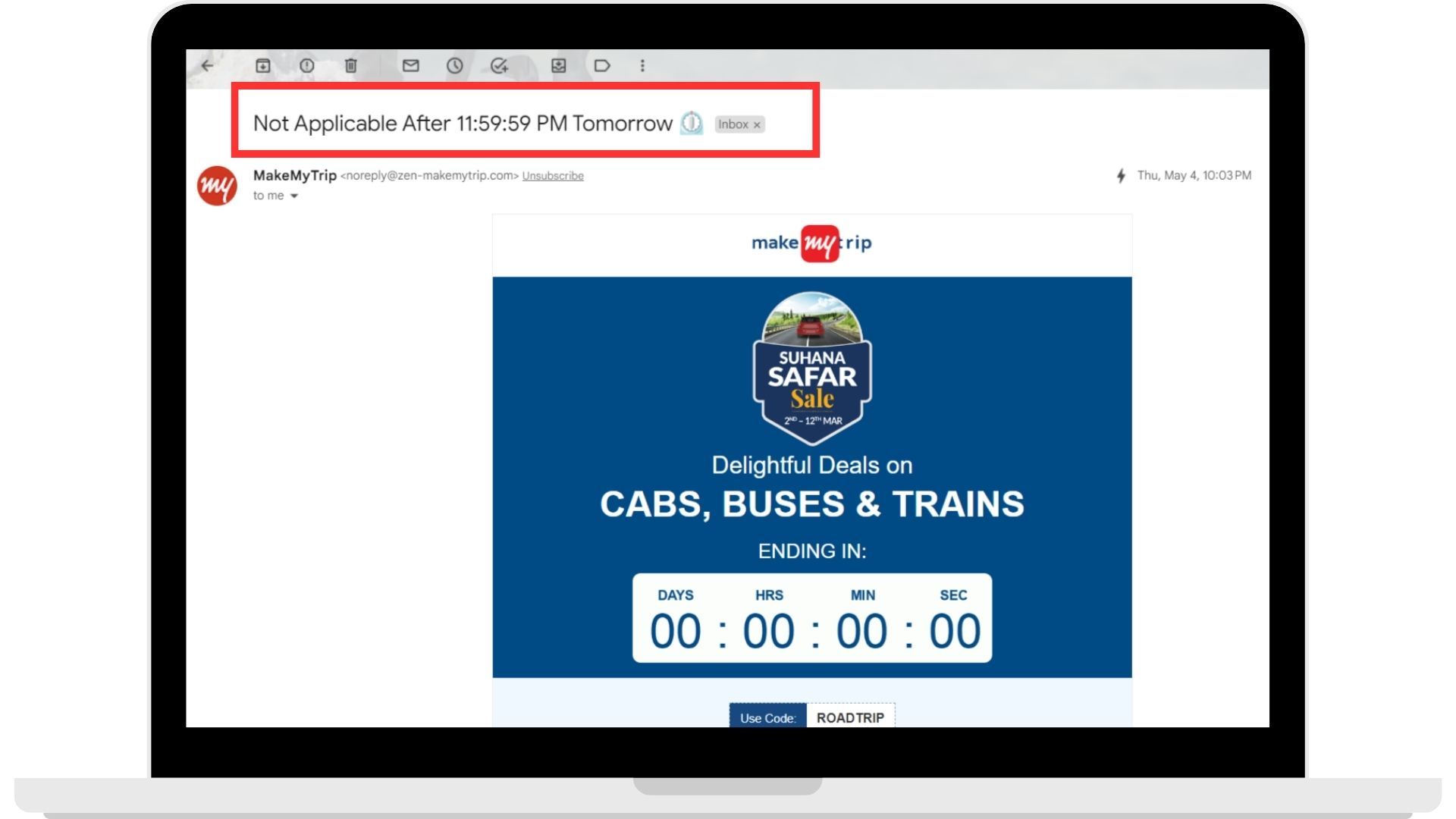
Give details to your prospect, for instance, instead of writing- "Let me know when we can connect to discuss further." You should write- "Hey, let me know when we can connect to discuss how we can enhance the buying experience for you." Do not try to gaslight your prospect; give them a clear direction of what to do next. Furthermore, when you give details in one go, it saves your prospects as well as your energy and a lot of to and fro that would be involved when they will question back what you want to connect for, followed by your email and multiple other follow-up emails. Now this entire to and fro is against the best practices of sales engagement.
Keep your content as crisp as possible, be it in emails or SMS and even On calls. Offer more with less content.
Give reasons to your prospect to stay engaged. Tell them who you are and why you are reaching out to them. Then tell them what is in it for them, and after that, finally, make an attempt to sell.
Always remember that-
"Oh my god, I love reading lengthy emails from strangers trying to sell products to me." - Said no one ever.
Finally, end your touchpoint on a positive note with a CTA and a warm goodbye.
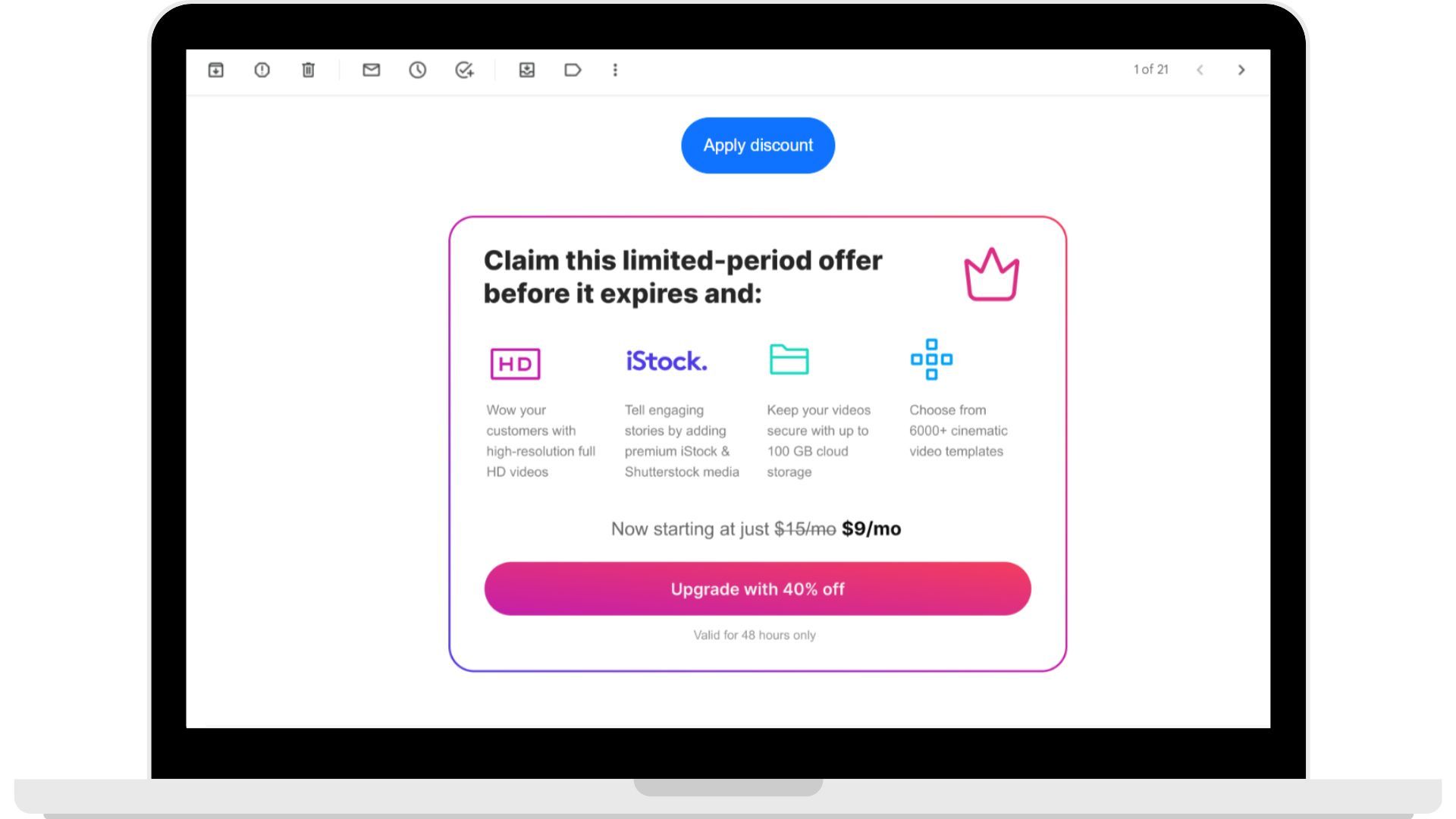
A/B test your sales cadence
You never know what really works unless you try multiple variations, especially when it comes to sales. Be it your pitch or a sales engagement campaign, you need to try and test different variations of them to finally understand which one works best for you and your prospects.
Once you are done designing your outbound sales cadence, create at least two variations of it. For instance, in the first variation, you can keep a call after a cold email, while in the other one, you can keep a follow-up email after a cold call and find out which one has better responses.
Similarly, experiment with your content as well. Segment your prospects into two groups and create two variations of your welcome email. Add different subject lines and different kinds of content. Then track which one has a better open rate or better engagement. If both of them performed below expectations, then you know that you need to revamp your content and redo your subject lines or add more engaging content to your emails.
Furthermore, track when your emails are being opened on which day and at which time, and you will be able to find a pattern and then make changes to your sales cadence accordingly. For example, you might find out that the emails you sent on Friday have less open rate because of the weekend, and then they become stale by Monday, so Friday evening is definitely not a good time to send one.
Similarly, you might observe that your SMS has a better open rate than your emails, so you can add more touch points through SMS instead of emails.
These observations accumulated together will finally help you to build a sales cadence that will get you results.
Do not wait; it's time to automate
A sales cadence will not work to its full potential until it has been combined with automation. You cannot follow up on 50 or even 5 people, for that matter, regularly within fixed timelines. If you try to, then it is not only foolish but also futile.
Build sales cadence with templates
Yes, building your sales cadence from scratch is always an option, but how can you speed up the process of building a sales cadence of equal functionality? By utilizing the sales cadence templates.
Zixflow has a sales cadence template for all the possible situations that a salesperson will ever be in. The sales cadence template not only speeds up the process but is also customizable, and you can add steps in the cadence as per your business needs.
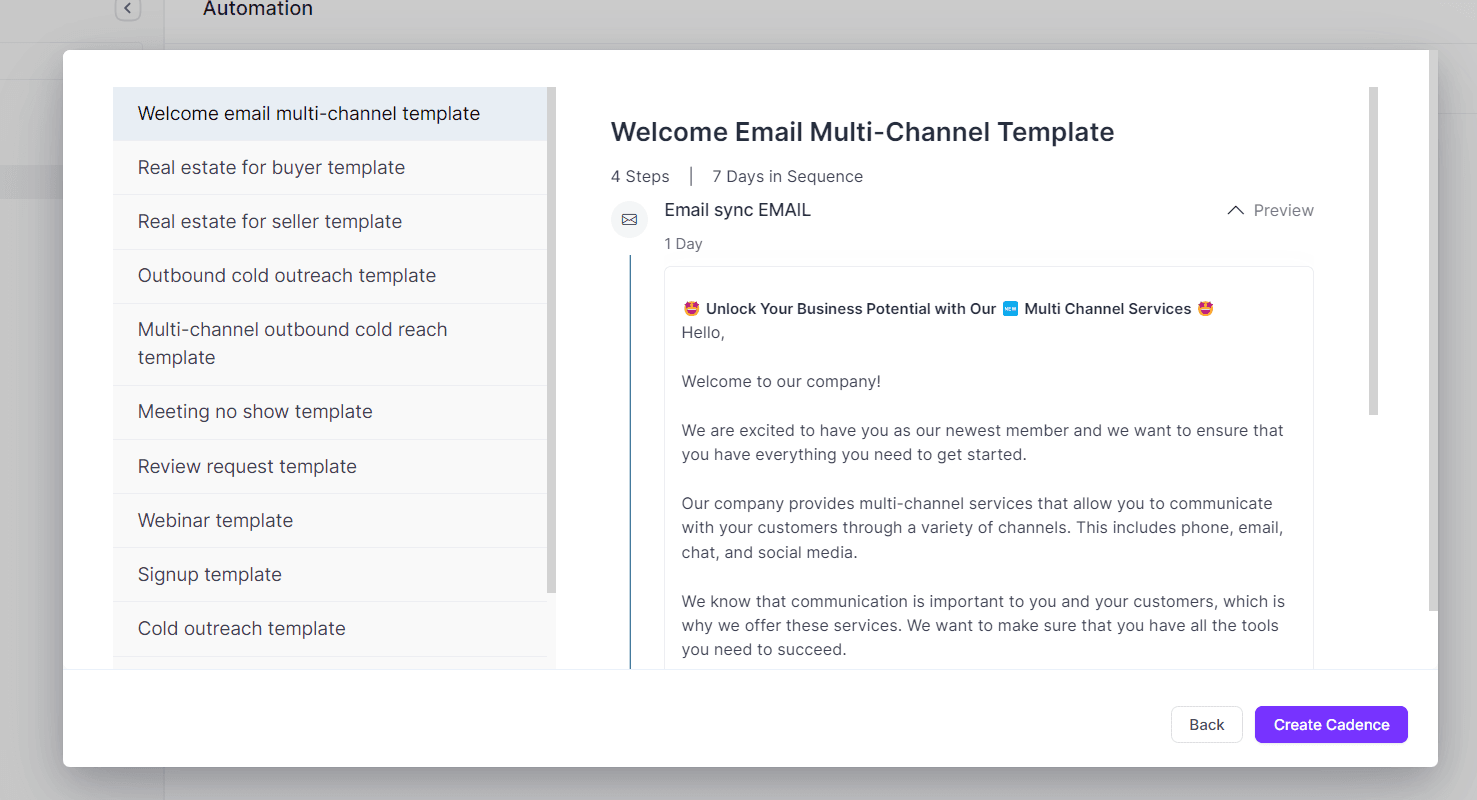
Auto-generate emails
AI is doing wonders, and so is Zixflow AI Wizard. Utilize the AI Wizard to auto-generate your emails and SMS texts. Give the target audience the tone you want in the content, a call to action, and a small description of your product. 3-2-1, and your content is ready!
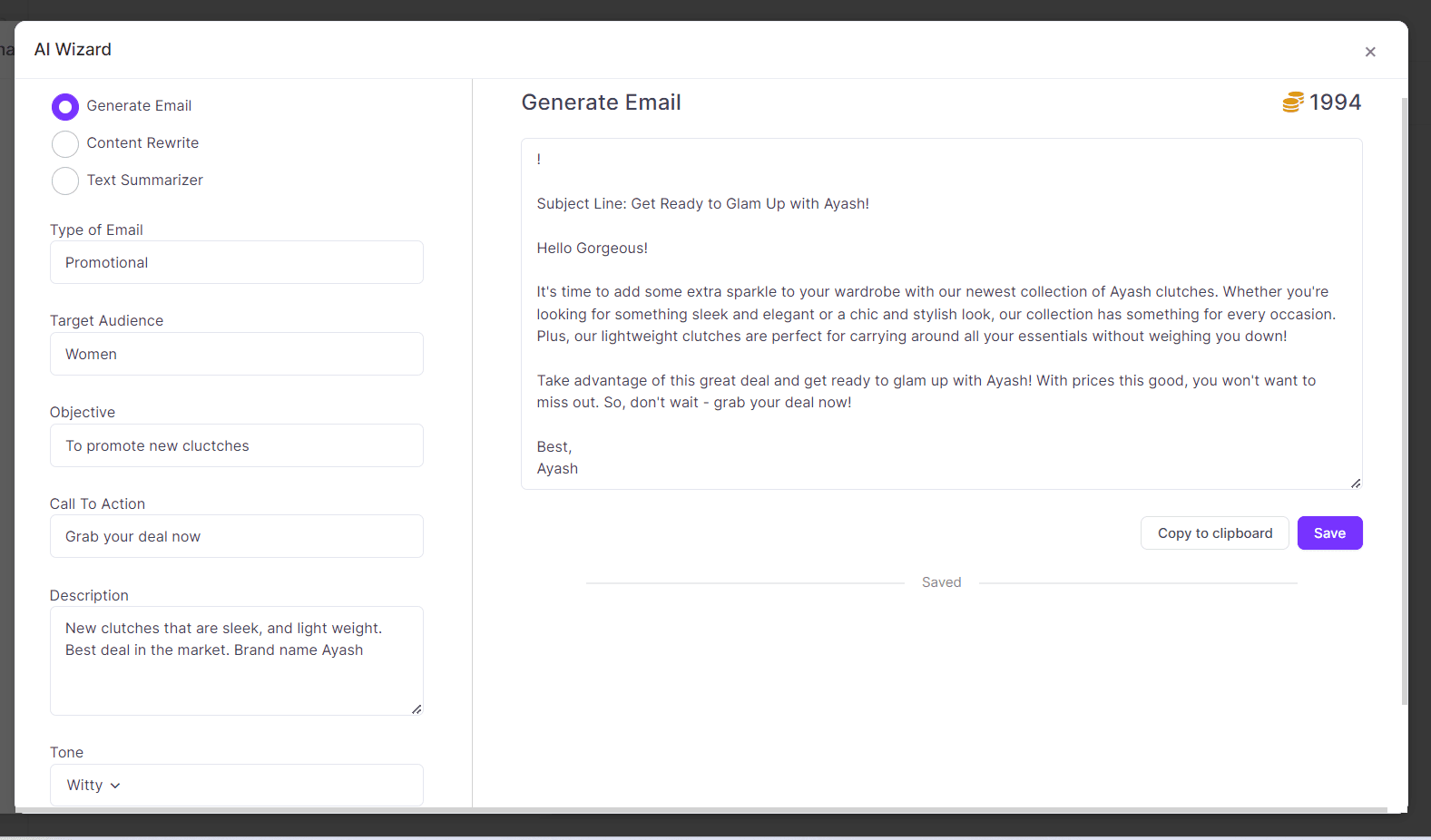
Automated Insights
You get real-time insights into all the steps of your sales cadence. Utilize detailed analytics to keep track of how far you have reached and also your sales cadence’s performance. Further, use this data to make changes in your sales cadence as needed.
Know when to stop
When you get a prospect, and you start with your sales cadence process, always focus on building the bond with the customer instead of just focusing on selling. Hear your customers out. Observe their response to your follow-up efforts. Understand their behavior better at every touch point and learn to call it a day.
When you build relationships with your customers, you make them feel valued and heard, and most importantly, you make them feel cared for. They feel that they are not just another customer to you and open up to share their concerns with you. Relationship selling is the most result-oriented sales technique, and pairing it up with your sales cadence is like the cherry on top. However, at times neither relationship selling nor your sales cadence efforts will work.
With sales, you can never have a 100% success rate. Not every prospect will buy. Even if you have given your best shot, but you are not getting any fruitful outcome, then learn when to stop. However, never end any relationship with a customer on a negative note and stop proactive efforts. Still, stay in touch, and keep sending your offers and discounts occasionally because if they are not buying today, then it does not mean that they might not be interested ever.
Sales Cadence examples
As aforementioned, a successful sales cadence is a result of a combination of multiple touchpoints at multiple channels. Here are a few examples of sales cadences that can work for all the different types of sales.
Outreach sales cadence example
Day 1: Send a highly personalized email addressing the prospects' concerns.
Day 3: Send a follow-up email to your last email.
Day 6: Send an SMS with details.
Day 8: Have a call with the prospect. Deliver your best pitch ever. If the call is not received, then drop an SMS or email regarding the same.
Day 10: Follow up on your last call/ email/ SMS
Day 12: If you receive a response, then go ahead with your follow-ups and engage with the customers. If not, then send a breakup email.
Now it seems like a taxing task to prepare multiple sales cadences for different purposes and for different audiences. However, with Zixflow, this task can be simplified since you can utilize the different sales cadence templates available, and not only that, you can also automate your sales cadence up to 100%.
Start closing more deals
A good and carefully curated sales cadence combined with automation is the only combination you need to nail your sales. There would be variations every step of the way; you would have to make the changes as per your buyer persona and changing customer needs. However, the core value of a sales cadence will stay the same- follow up on your customers, tell them what is in it for them, and make them feel valued.
Sales cadence is a weapon that cannot go wrong in the sales industry. It's a leading trend in sales engagement that businesses must embrace. And now that you have come so far, why not give one of the best sales cadences a try for free? Take your sales cadence free demo now and watch your sales soar with the Zixflow sales cadence.
